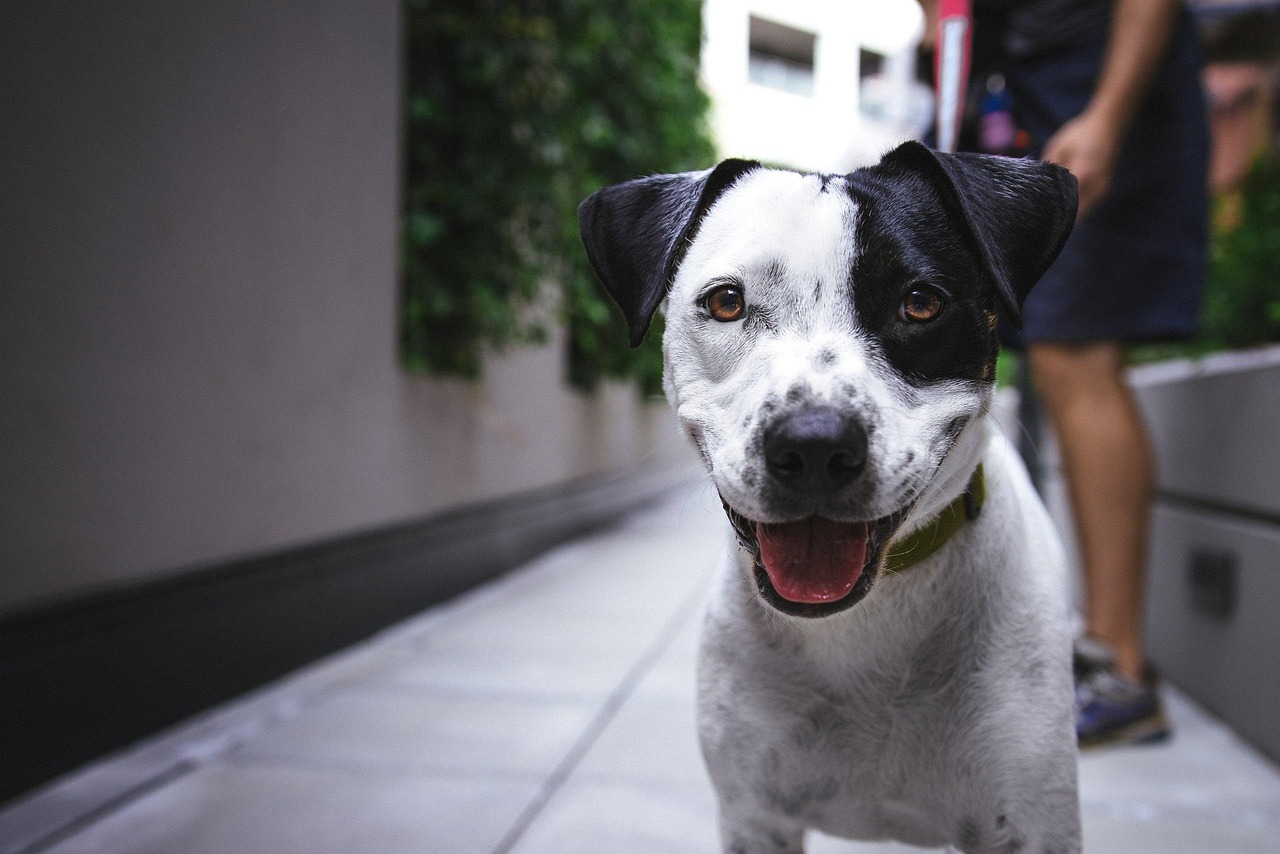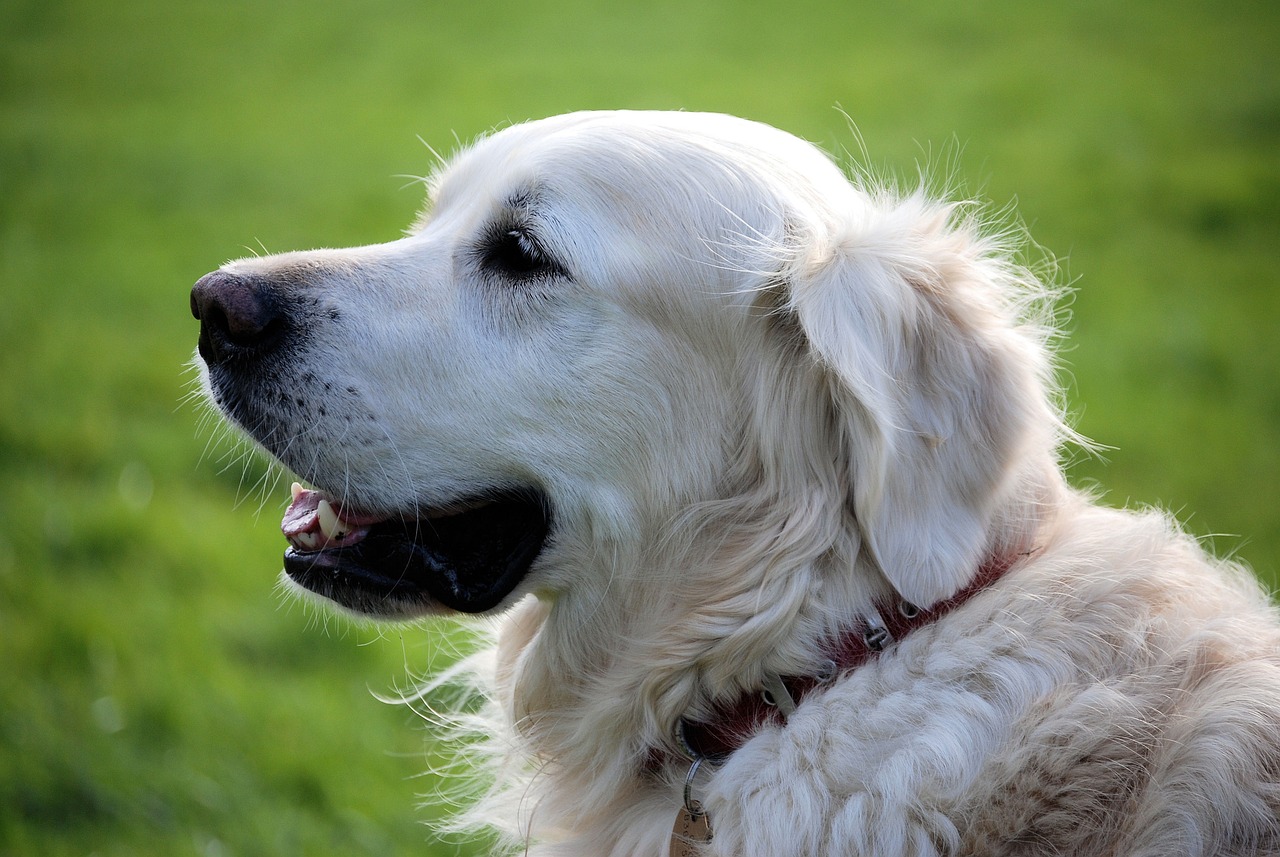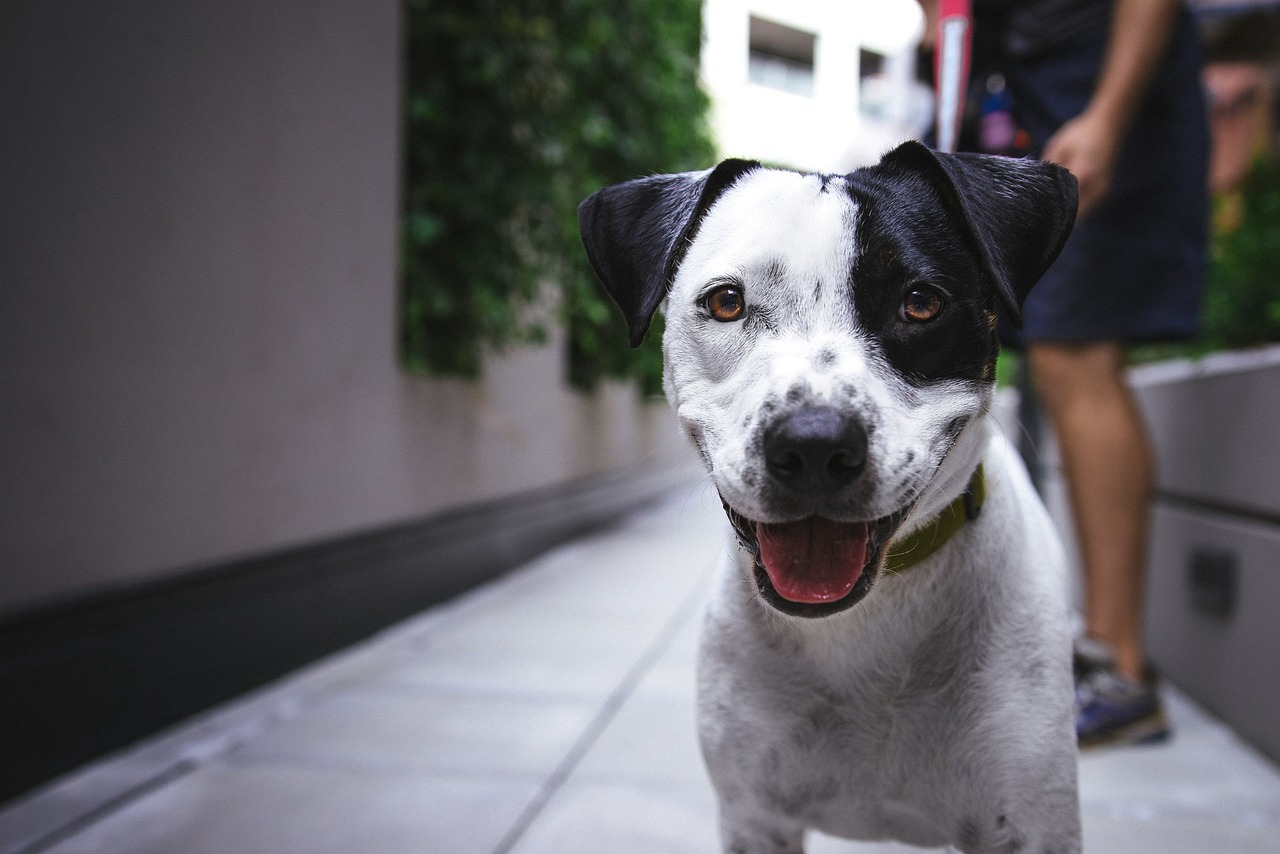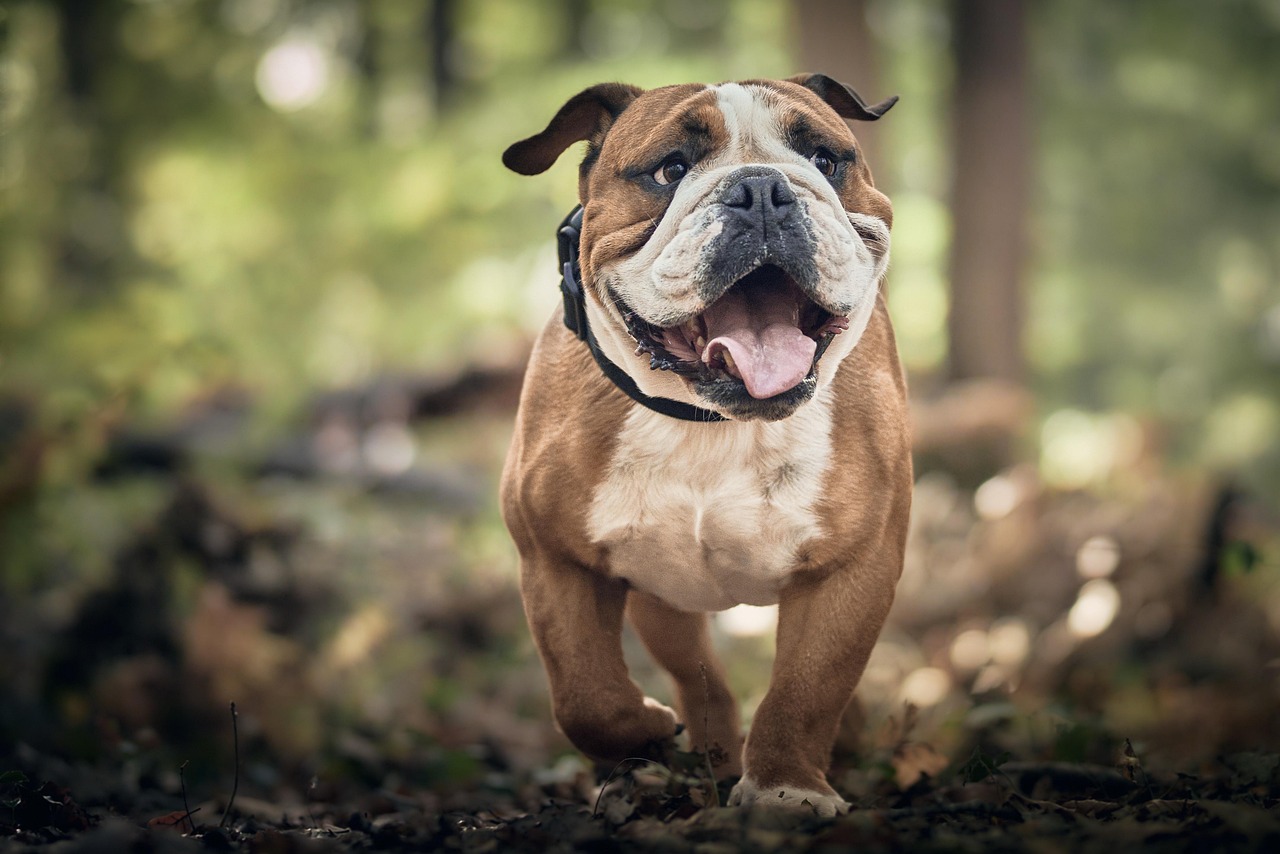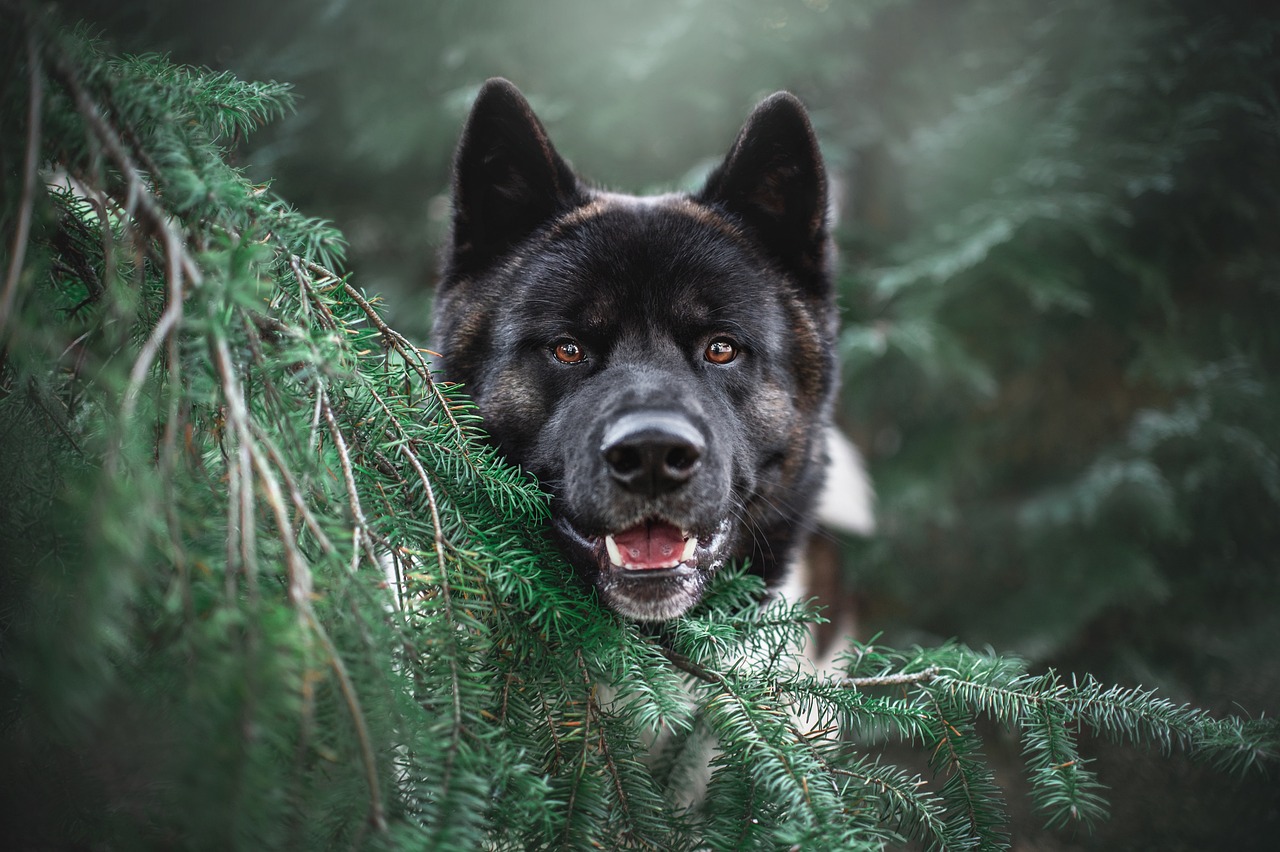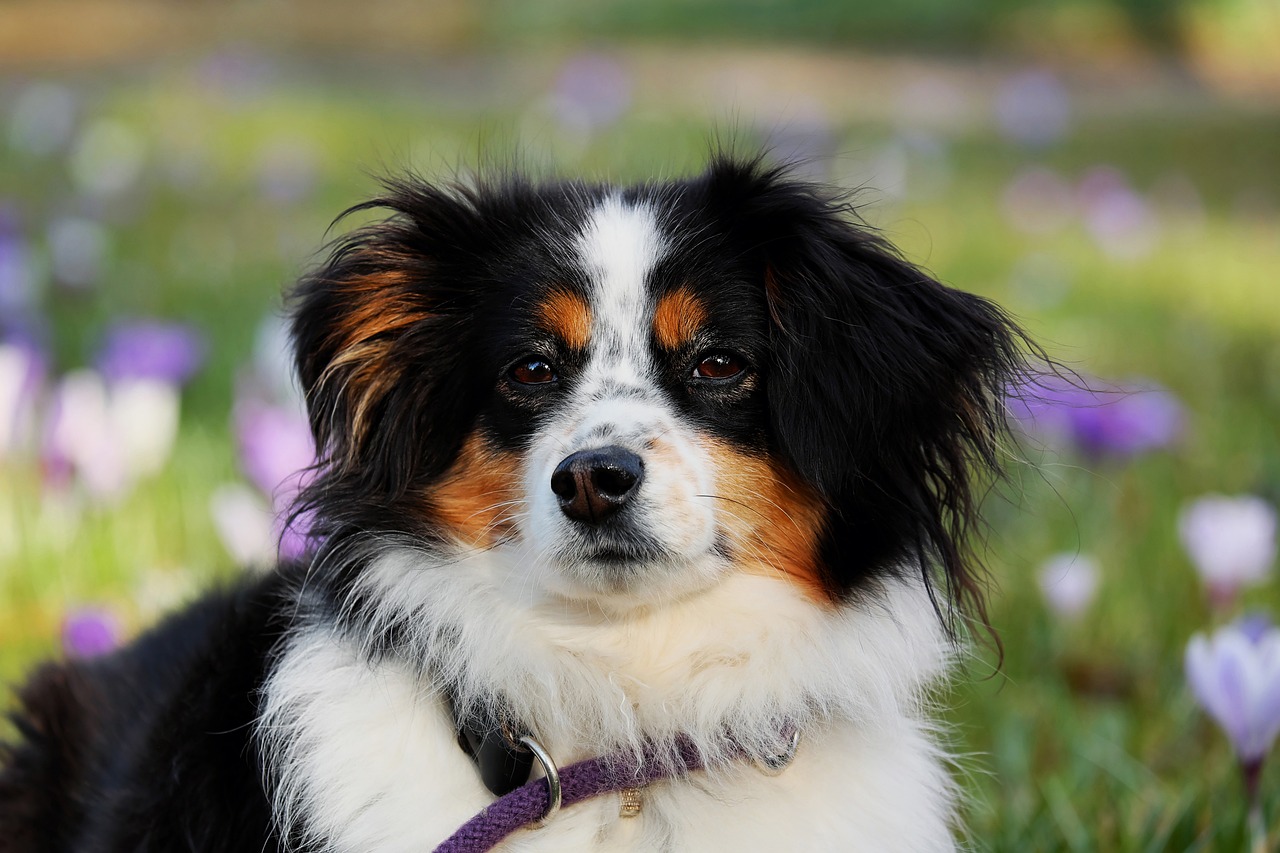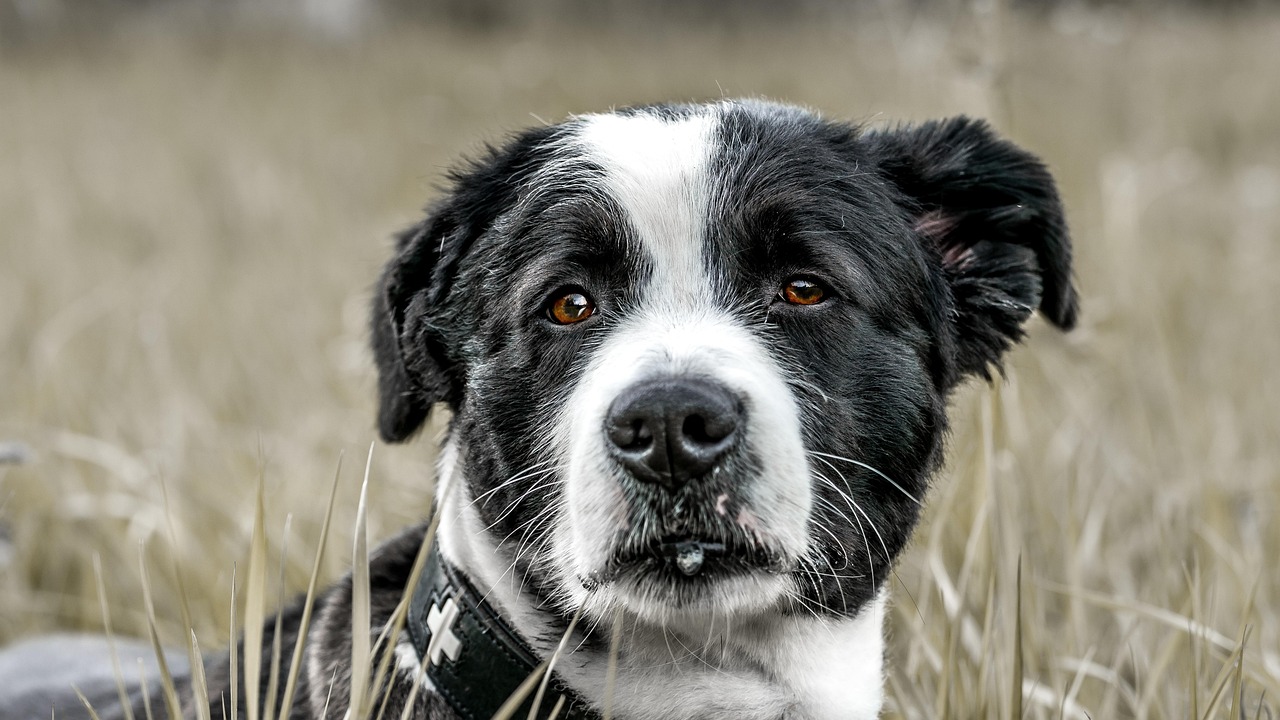This article provides essential strategies and insights on preventing dog bites in children, emphasizing safety measures, understanding dog behavior, and fostering positive interactions between kids and dogs.
Understanding Dog Behavior
Recognizing the signs of stress or aggression in dogs is crucial for preventing bites. Understanding common canine behaviors can help caregivers identify when a dog is uncomfortable. For instance, a dog that is growling or has its ears pinned back may be feeling threatened.
Teaching Children About Dog Safety
Educating children on how to interact safely with dogs can significantly reduce bite incidents. It’s important to teach kids about dog body language and boundaries to ensure safe interactions.
- Recognizing Dog Body Language: Children should learn key signals that indicate a dog is feeling threatened or anxious, such as a stiff posture or a tucked tail.
- Signs of Stress in Dogs: Identifying stress signals, such as tail position and ear orientation, can help children understand when to give a dog space.
- Understanding Aggressive Behaviors: Common aggressive behaviors include growling or baring teeth. Children should be taught to back away calmly if they observe these signs.
Safe Approaches to Dogs
Teaching children the safest ways to approach and interact with dogs is vital. They should learn to:
- Ask the owner for permission before petting a dog.
- Approach a dog slowly and calmly.
- Respect a dog’s space and not disturb it while eating or sleeping.
Supervision During Interactions
Adult supervision during interactions between children and dogs is crucial for safety. Adults should monitor these encounters to prevent potential issues.
Creating Safe Play Environments
Establishing a safe play area for children and dogs minimizes risks. Design environments that allow for safe interactions while maintaining clear boundaries.
Recognizing When to Intervene
Understanding when to step in during a child’s interaction with a dog is essential. Adults should be aware of signs that indicate a dog may not want to engage.
Socialization and Training for Dogs
Proper socialization and training for dogs can reduce the likelihood of aggressive behavior. Early socialization is critical, as it helps dogs become comfortable around children.
Positive Reinforcement Training Techniques
Using positive reinforcement techniques can effectively train dogs to behave appropriately around children. This encourages good behavior and discourages aggression.
What to Do If a Bite Occurs
Knowing how to respond if a dog bite occurs is essential for minimizing harm. Immediate first aid measures include cleaning wounds and assessing the severity of the injury.
Seeking Medical Attention
Understanding when to seek medical attention after a dog bite is crucial. Signs that indicate the need for professional care include deep wounds or signs of infection.
By following these expert safety tips, caregivers can significantly reduce the risk of dog bites and create a harmonious environment for both children and dogs.

Understanding Dog Behavior
is essential for ensuring safe interactions between dogs and children. Recognizing the signs of stress or aggression in dogs can significantly reduce the risk of bites. This section will delve into common canine behaviors that may indicate discomfort or potential danger, empowering caregivers and children to respond appropriately.
Dogs communicate largely through their body language. Understanding these signals can help in identifying when a dog is feeling uneasy or threatened. Here are some common signs to watch for:
- Tail Position: A dog with a low or tucked tail may be feeling scared or anxious, while a tail held high can indicate excitement or aggression.
- Ears: Ears that are pinned back against the head often signal fear or submission, whereas ears that are standing erect may indicate alertness or aggression.
- Body Stiffness: A dog that suddenly becomes stiff may be preparing to react defensively. This is a clear sign to give the dog space.
- Growling or Snarling: These vocalizations are clear warnings that a dog is uncomfortable. It’s crucial to respect these signals and back away.
- Yawning or Licking Lips: These are often signs of stress or anxiety. A dog may yawn or lick its lips when it feels threatened.
In addition to body language, understanding a dog’s contextual behavior is vital. For instance, a dog that is cornered may display aggressive behaviors out of fear. Similarly, a dog that is overly excited may accidentally nip in play. It is important to teach children to recognize these contexts to avoid misunderstandings.
By fostering an environment where children are educated about these canine behaviors, we can promote safer interactions and reduce the likelihood of dog bites. Encouraging children to observe and respect dog signals will lead to more positive experiences for both parties.

Teaching Children About Dog Safety
is a crucial step in preventing dog bites and fostering positive interactions between kids and dogs. By equipping children with the knowledge and skills to interact safely with dogs, we can significantly reduce the risk of bite incidents. Here, we explore effective techniques for teaching kids about dog body language, boundaries, and safe approaches to dogs.
Understanding dog body language is essential for children to interpret how a dog is feeling. Children should learn to recognize key signals, such as:
- Tail Position: A wagging tail doesn’t always mean a dog is friendly. A low or tucked tail can indicate fear or submission.
- Ear Orientation: Ears that are pinned back may signal discomfort or aggression, while relaxed ears indicate a calm dog.
- Facial Expressions: A dog showing its teeth can be a warning sign, while a relaxed mouth indicates a happy dog.
Teaching children the safest ways to approach dogs is vital. Here are some guidelines:
- Always ask the owner for permission before petting a dog.
- Approach the dog calmly and avoid sudden movements.
- Let the dog sniff your hand before petting it.
- Avoid hugging or grabbing the dog, as this can be perceived as threatening.
Adult supervision is crucial during interactions between children and dogs. Parents should ensure that:
- They are present to monitor playtime.
- They intervene if the child is too rough or if the dog shows signs of distress.
Establishing safe play areas for children and dogs can minimize risks. Consider these tips:
- Designate a specific area for play that is free from distractions.
- Ensure the environment is secure, with no escape routes for the dog.
In conclusion, educating children about dog safety is a proactive approach to preventing bites. By teaching them to recognize dog body language, approach dogs safely, and the importance of supervision, we can foster a harmonious relationship between kids and dogs.
Recognizing Dog Body Language
is essential for ensuring safe interactions between children and dogs. Understanding how dogs communicate through their body language can significantly reduce the risk of misunderstandings that may lead to bites or aggressive behavior.
Dogs express their feelings and intentions through a variety of signals. By teaching children to recognize these signals, we empower them to interact with dogs more safely and respectfully. Here are some key indicators that a dog may be feeling threatened or anxious:
- Tail Position: A dog with a low or tucked tail is often feeling scared or submissive. Conversely, a tail held high and stiff may indicate a dog that is feeling aggressive or threatened.
- Ears: Ears that are pinned back against the head often signal fear or anxiety. Ears that are perked up and facing forward can show curiosity or excitement.
- Body Posture: A dog that is standing tall with a stiff body may feel defensive. A dog that turns its body away or crouches down is indicating a desire to avoid confrontation.
- Facial Expressions: A dog showing a relaxed mouth and soft eyes is typically calm. In contrast, a dog that is showing bared teeth or has a tense face may be feeling threatened.
- Growling or Barking: Vocalizations can be a clear sign of discomfort. Growling is often a warning that a dog feels threatened, while excessive barking can indicate excitement or fear.
By recognizing these signals, children can learn to give dogs the space they need when they are feeling uncomfortable. This understanding fosters a safer environment for both children and dogs, reducing the likelihood of negative interactions.
In conclusion, teaching children to recognize and interpret dog body language is a vital step in promoting safe interactions. When children understand how to read these signals, they can make better decisions when approaching or playing with dogs, ultimately helping to prevent unnecessary bites and ensuring a harmonious relationship between kids and their furry friends.
Signs of Stress in Dogs
Understanding the is essential for ensuring safe interactions between children and their canine companions. By recognizing these signals, children can learn when a dog needs space, helping to prevent potential bites and fostering a safer environment for both parties.
Dogs communicate their feelings through body language, and being able to interpret these signals can make all the difference. Here are some key indicators to watch for:
- Tail Position: A dog’s tail can reveal a lot about its emotional state. If a dog’s tail is tucked between its legs, it often signifies fear or anxiety. Conversely, a wagging tail does not always indicate happiness; the speed and height of the wag can also convey agitation or excitement.
- Ear Orientation: Ears that are pinned back against the head typically indicate discomfort or submission. On the other hand, ears held up and forward may suggest curiosity or alertness, but if they are stiff and erect, it could signal aggression or stress.
- Body Posture: A stressed dog may exhibit a lowered body posture, showing submission or fear. In contrast, a dog that is standing tall with a stiff body may be feeling threatened or aggressive.
- Facial Expressions: Pay attention to a dog’s facial expressions. A dog showing its teeth, even in a non-threatening manner, can be a warning sign. Additionally, a dog that is avoiding eye contact or has wide eyes may be feeling anxious.
By teaching children to recognize these signs, they can learn to respect a dog’s boundaries and understand when it’s best to give the animal some space. It’s crucial to remind kids that a dog’s behavior can change rapidly, and being observant can help them stay safe.
In conclusion, understanding stress signals in dogs not only protects children but also promotes a healthier relationship between dogs and humans. Educating kids about these signs empowers them to make informed decisions during interactions, ultimately leading to safer and more enjoyable experiences with their furry friends.
Understanding Aggressive Behaviors
When it comes to ensuring the safety of children around dogs, it is essential to recognize and understand aggressive behaviors that can manifest in canines. Dogs, like humans, experience a range of emotions, and their body language can provide critical insights into their feelings and intentions. By understanding these behaviors, children can learn how to respond appropriately and safely.
Some common signs of aggression in dogs include:
- Growling: A growl is a clear warning sign that a dog is uncomfortable or feels threatened. It serves as a way for the dog to communicate its distress.
- Baring Teeth: When a dog shows its teeth, it is often a sign of aggression or fear. This behavior should never be ignored.
- Stiff Body Posture: A dog that suddenly becomes rigid may be preparing to react defensively.
- Raised Hackles: The fur along a dog’s back may stand up when it feels threatened, indicating heightened arousal.
- Direct Staring: Prolonged eye contact can be perceived as a challenge, which may provoke an aggressive response.
Children should be taught to recognize these signs and to understand that if a dog exhibits any of these behaviors, it is crucial to stay calm and avoid sudden movements. Instead of approaching the dog, they should back away slowly and seek help from an adult. It is important to emphasize that children should never attempt to pet or engage with a dog that is displaying signs of aggression, as this could lead to dangerous situations.
Furthermore, teaching children to respect a dog’s space and to understand when a dog wants to be left alone can significantly reduce the risk of aggressive encounters. By fostering a respectful attitude towards dogs, children can learn to interact safely and positively with these beloved pets.
Safe Approaches to Dogs
Teaching children how to interact safely with dogs is essential for preventing dog bites and fostering positive relationships between kids and pets. The following guidelines will help children understand the safest ways to approach and engage with dogs, ensuring that both the child and the dog have a positive experience.
- Ask for Permission: Always teach children to ask the dog’s owner for permission before approaching. This respects the owner’s authority and ensures the dog is comfortable with new interactions.
- Approach Calmly: Encourage children to approach dogs slowly and calmly. Sudden movements can startle a dog, potentially leading to defensive behavior.
- Let the Dog Come to You: Children should be taught to stand still and allow the dog to come to them. This gives the dog the chance to assess the situation and feel safe.
- Use a Soft Voice: Remind children to speak softly and gently when interacting with dogs. Loud noises can be intimidating for dogs and may provoke unwanted reactions.
- Offer a Hand: Teach children to extend their hand slowly towards the dog, palm up, to let the dog sniff. This is a non-threatening gesture that allows the dog to become familiar with them.
- Avoid Direct Eye Contact: Explain that staring directly into a dog’s eyes can be seen as a challenge. Instead, children should look at the dog’s body language and respond accordingly.
- Respect the Dog’s Space: Children should learn to recognize when a dog is uncomfortable. If a dog is backing away, growling, or showing other signs of stress, it’s important to give the dog space.
- Gentle Touch: If the dog appears friendly, children should be taught to pet gently, starting on the dog’s back rather than the head. This approach minimizes the chance of startling the dog.
By following these guidelines, children can learn to interact with dogs in a way that promotes safety and builds trust. Understanding that each dog has its own personality and comfort levels is key to ensuring enjoyable interactions.

Supervision During Interactions
Supervising interactions between children and dogs is crucial for safety. When children and dogs interact, the potential for misunderstandings and accidents increases, making adult supervision a necessary component of these encounters. This section discusses the importance of adult supervision and offers effective strategies for monitoring these interactions.
Importance of Adult Supervision
- Adult supervision ensures that children understand how to interact with dogs safely.
- It allows for immediate intervention if a dog shows signs of discomfort or aggression.
- Supervision helps to reinforce positive behaviors in both children and dogs.
Strategies for Effective Monitoring
1. Maintain Close Proximity: Always stay within arm's reach of the child and dog during interactions.2. Observe Body Language: Watch for signs of stress in both the child and the dog, such as tense body posture or growling.3. Set Clear Boundaries: Establish rules for interaction, such as not approaching a dog while it is eating or sleeping.4. Teach Children to Respect Space: Encourage children to give dogs space when they show signs of discomfort.
Creating Safe Play Environments
Establishing a safe play area for children and dogs minimizes risks. Here are some tips:
- Designate a specific area for play that is free from distractions and hazards.
- Use barriers or gates to separate dogs from areas where children play unsupervised.
- Ensure that the play area is secure and free from escape routes for the dog.
Recognizing When to Intervene
Understanding when to step in during a child’s interaction with a dog is essential. Look out for:
- Signs of fear or anxiety in the dog, such as cowering or backing away.
- Excessive excitement from the child that may overwhelm the dog.
- Any sudden changes in the dog’s behavior that could indicate stress or aggression.
By implementing these strategies and maintaining vigilant supervision, adults can create a safe and enjoyable environment for both children and dogs, significantly reducing the risk of dog bites and fostering positive interactions.
Creating Safe Play Environments
Establishing a safe play area for both children and dogs is essential to minimize risks and promote enjoyable interactions. A well-designed environment not only keeps everyone safe but also encourages positive relationships between kids and their furry friends. Here are some practical tips for creating such spaces:
- Designate a Specific Area: Choose a location that is free from hazards like sharp objects, toxic plants, or busy roads. A fenced yard or a designated park area can provide a secure environment.
- Use Appropriate Fencing: Ensure that the play area is enclosed with sturdy fencing that is tall enough to prevent dogs from jumping over and secure enough to keep them from digging underneath.
- Soft Surfaces: Consider using grass, rubber mats, or sand to create a soft landing. This reduces the risk of injury during play and makes the area more comfortable for both children and dogs.
- Provide Clear Boundaries: Use visual markers such as cones or flags to define the play area. This helps children understand where they can play and where they should keep their distance from the dog.
- Incorporate Interactive Elements: Add toys and agility equipment suitable for both dogs and children. This encourages safe play and helps to keep dogs engaged and active.
- Regular Maintenance: Keep the play area clean and well-maintained. Regularly check for any potential hazards and ensure that the space remains safe for play.
By following these guidelines, you can create a safe and enjoyable environment for children and dogs to interact. Remember, supervision is key to ensuring that playtime remains safe and fun for everyone involved.
Recognizing When to Intervene
Understanding when to step in during a child’s interaction with a dog is essential for ensuring safety and preventing potential bites. Dogs, like humans, have their own boundaries and comfort zones, and it is crucial for adults to be aware of the signs that indicate a need for intervention. Below are key scenarios where adult supervision and intervention may be necessary:
- Signs of Distress: If a dog is showing signs of stress, such as panting, whining, or attempting to move away, it is important to intervene. Children may not recognize these signals, and stepping in can prevent escalation.
- Overly Excited Behavior: Children often express excitement around dogs, which can lead to sudden movements or loud noises. If a dog appears overwhelmed or agitated, adults should step in to calm the situation.
- Inappropriate Touching: Children may not understand appropriate ways to touch or interact with dogs. If a child is pulling a dog’s tail or hugging them too tightly, adult intervention is necessary to prevent potential bites.
- Feeding or Treating: When a child is feeding a dog, especially with treats, it is critical to supervise closely. Dogs can become possessive over food, and adults should ensure that the interaction remains safe.
- Playing Rough: If play becomes too rough, with the child jumping or shouting, it may provoke the dog. Adults should monitor playtime and intervene if the dog seems uncomfortable or defensive.
By recognizing these scenarios, adults can create a safer environment for both children and dogs. It is important to educate children on the importance of respect and understanding in their interactions with dogs, fostering a positive and safe relationship.

Socialization and Training for Dogs
Proper socialization and training are essential components in ensuring a dog’s well-being and safety, particularly around children. By implementing effective training methods and exposing dogs to various stimuli, owners can significantly reduce the likelihood of aggressive behavior.
Importance of Early Socialization
Early socialization is crucial for a dog’s development. Puppies that are introduced to a variety of people, environments, and other animals during their formative weeks are more likely to grow into well-adjusted adults. This exposure helps them learn how to react appropriately in different situations, reducing fear and anxiety that can lead to aggression.
- Introduce your puppy to different sounds, sights, and smells.
- Encourage positive interactions with children and other pets.
- Visit various environments, such as parks and busy streets.
Positive Reinforcement Training Techniques
Utilizing positive reinforcement is one of the most effective training methods. This technique encourages good behavior by rewarding dogs with treats, praise, or playtime when they exhibit desired actions. For instance, rewarding a dog for sitting calmly when a child approaches can reinforce positive interactions.
- Use treats to reward calm behavior around children.
- Incorporate play as a reward for following commands.
- Be consistent with commands and rewards to reinforce learning.
Exposing Dogs to Various Stimuli
Exposing dogs to different stimuli, such as different types of people, sounds, and environments, is vital. This exposure helps dogs become more adaptable and less likely to react aggressively when faced with unfamiliar situations. Regular outings and interactions can help dogs build confidence and reduce fear-based aggression.
Conclusion
In conclusion, proper socialization and training are fundamental in cultivating a friendly and well-behaved dog. By focusing on early socialization, employing positive reinforcement techniques, and exposing dogs to diverse stimuli, owners can foster a safe environment for both their pets and children, ultimately reducing the risk of aggressive behavior.
Importance of Early Socialization
Early socialization is essential for developing a well-adjusted and stable adult dog. Socializing puppies during their formative months helps them learn how to interact positively with various stimuli, including people, children, and other pets. This process lays the groundwork for their behavior as adults, significantly impacting their temperament and adaptability.
When puppies are exposed to different environments, sounds, and experiences, they become less fearful and more confident. This exposure helps them understand social cues and appropriate behaviors, reducing the likelihood of aggression or anxiety later in life. For instance, puppies that interact with gentle children learn to associate kids with positive experiences, leading to better behavior around them as adults.
Moreover, socialization helps prevent behavioral issues such as excessive barking, chewing, or fear-based aggression. By allowing puppies to meet other friendly dogs and pets, they learn how to communicate effectively and establish healthy boundaries. This can lead to more harmonious relationships not only with their human families but also with other animals.
To effectively socialize a puppy, consider the following strategies:
- Start Early: Begin socialization as soon as you bring your puppy home, ideally between 3 to 14 weeks of age.
- Variety of Experiences: Expose your puppy to different environments, sounds, and situations, including parks, busy streets, and pet-friendly stores.
- Controlled Interactions: Arrange playdates with well-behaved dogs and supervised interactions with children to foster positive experiences.
- Positive Reinforcement: Use treats and praise to reward your puppy for calm and friendly behavior during social interactions.
In conclusion, prioritizing early socialization is crucial for developing a well-behaved and confident adult dog. By investing time and effort into this process, owners can help ensure their pets grow up to be friendly, adaptable, and less prone to behavioral issues.
Positive Reinforcement Training Techniques
Training dogs using positive reinforcement techniques is one of the most effective methods to promote desirable behaviors, especially around children. This approach focuses on rewarding good behavior rather than punishing undesirable actions, fostering a trusting relationship between the dog and its human family members.
To implement positive reinforcement effectively, follow these key strategies:
- Use Treats and Praise: Reward your dog with treats, verbal praise, or affection immediately after they display good behavior. For example, if your dog sits calmly while a child approaches, offer a treat or say “good boy/girl” to reinforce that behavior.
- Be Consistent: Consistency is crucial in training. Always reward the same behavior in the same way so your dog understands what is expected. For instance, if you want your dog to stay calm around children, ensure you reward this behavior every time it occurs.
- Set Clear Boundaries: Establish clear rules for interactions between your dog and children. Teach your dog which areas are off-limits and reward them for respecting these boundaries.
- Gradual Exposure: Slowly introduce your dog to children in a controlled environment. Start with short interactions and gradually increase the duration as your dog becomes more comfortable. Reward calm behavior during these interactions.
- Redirect Negative Behavior: If your dog shows signs of aggression or anxiety, redirect their attention to a toy or a command they know well. Reward them for following your lead, which helps to build positive associations.
By utilizing these positive reinforcement techniques, you can effectively train your dog to behave appropriately around children. This not only enhances safety but also builds a strong bond between your dog and your family. Remember, patience and consistency are key in the training process.
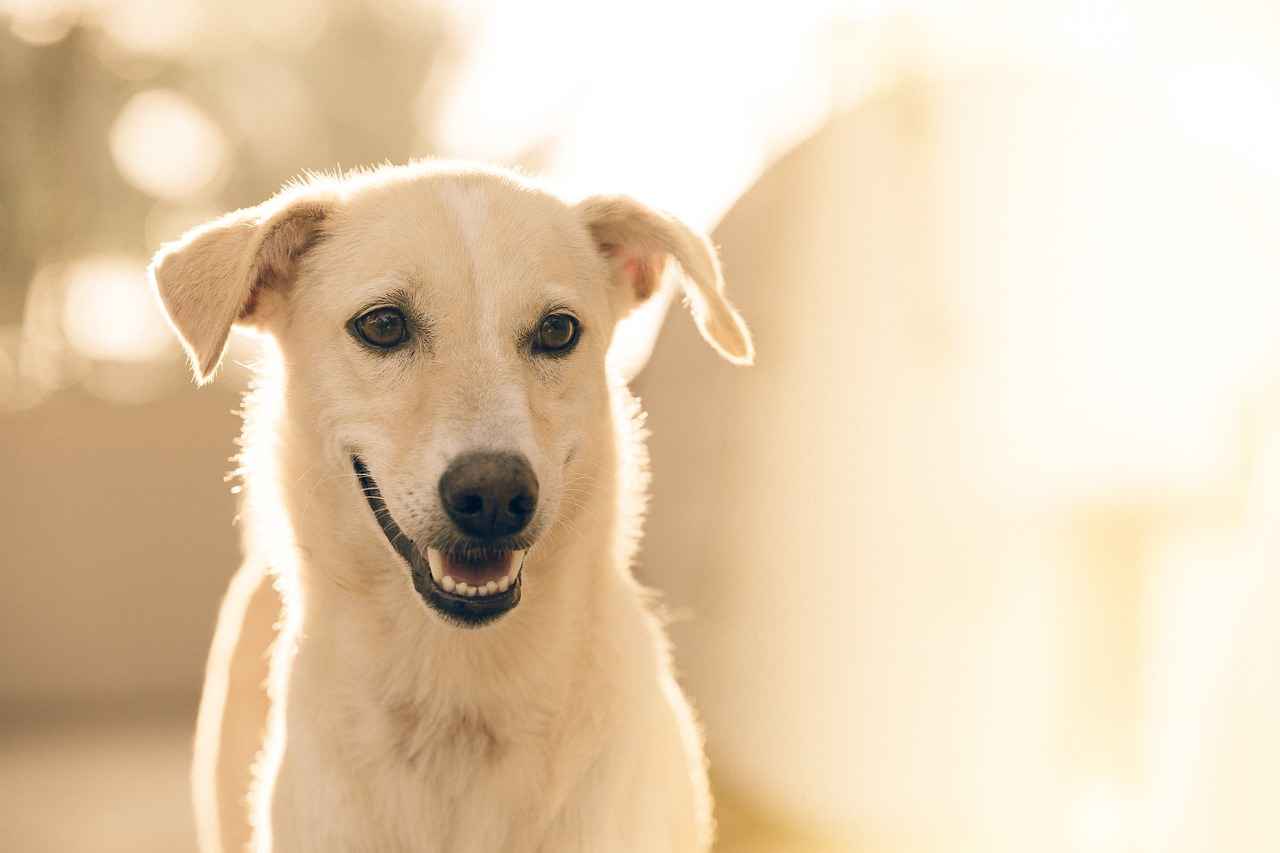
What to Do If a Bite Occurs
Understanding how to effectively respond to a dog bite is crucial for minimizing harm and ensuring the safety of the child involved. In this section, we will outline practical steps that should be taken immediately after a dog bite occurs, as well as the importance of proper care and follow-up.
| Step | Description |
|---|---|
| 1. Stay Calm | It’s vital to remain calm to avoid further distress to the child. Reassure them that help is on the way. |
| 2. Assess the Injury | Check the severity of the bite. If the wound is bleeding heavily or appears deep, it may require immediate medical attention. |
| 3. Clean the Wound | Gently clean the bite area with soap and water to reduce the risk of infection. Avoid scrubbing the wound. |
| 4. Apply a Bandage | Cover the wound with a sterile bandage to protect it from dirt and bacteria. |
| 5. Seek Medical Attention | If the bite is serious or shows signs of infection, such as redness, swelling, or pus, consult a healthcare professional immediately. |
Following Up
After addressing the immediate care needs, it is essential to monitor the child for any signs of complications. Look out for symptoms such as fever or increased pain at the site of the bite, which may indicate an infection. Additionally, it is important to report the incident to the dog’s owner and local animal control to ensure the dog is healthy and up to date on vaccinations.
Emotional Support
Injuries can be traumatic for children. Providing emotional support and reassurance will help them process the experience. Encourage open communication about their feelings and consider consulting a professional if they exhibit signs of anxiety or fear around dogs afterward.
By taking these steps, caregivers can effectively minimize the impact of a dog bite and ensure proper care for the child involved.
Immediate First Aid Steps
Experiencing a dog bite can be distressing, but knowing the correct first aid measures can significantly reduce the risk of infection and complications. Here are the essential steps to follow immediately after a dog bite:
- Stay Calm: It’s important to remain calm to effectively assess the situation and provide care.
- Control Bleeding: If the wound is bleeding, apply gentle pressure with a clean cloth or bandage. Elevate the injured area if possible.
- Clean the Wound: Rinse the bite area under lukewarm water for at least 5-10 minutes. Use mild soap to clean the wound thoroughly, removing any dirt or debris.
- Assess the Injury: Examine the wound carefully. If the bite is deep, jagged, or if there are signs of severe bleeding, it may require medical attention.
- Apply a Sterile Bandage: After cleaning, cover the wound with a sterile bandage to protect it from infection.
- Watch for Signs of Infection: Monitor the wound over the next few days for signs of infection, such as redness, swelling, or discharge.
It is crucial to remember that not all dog bites are the same; some may appear minor but can still lead to serious complications. Therefore, if there is any doubt about the severity of the injury or if the dog’s vaccination status is unknown, seeking professional medical help is recommended.
By following these , you can help ensure the best possible outcome after a dog bite. Always prioritize safety and seek medical attention if necessary.
Seeking Medical Attention
Understanding when to seek medical attention after a dog bite is critical for ensuring the health and safety of the affected individual. Dog bites can range from minor injuries to serious wounds that may lead to complications. It is essential to recognize the signs that indicate the need for professional care.
After a dog bite, the following symptoms should prompt immediate medical attention:
- Severe bleeding: If the wound is bleeding profusely and does not stop with basic first aid measures, it is crucial to seek professional help.
- Deep puncture wounds: Bites that penetrate deeply may damage underlying tissues and require medical evaluation to prevent infection.
- Signs of infection: If the bite area becomes red, swollen, or increasingly painful, or if pus begins to drain from the wound, these are signs of infection that require treatment.
- Fever: A fever following a dog bite can indicate an infection and should be assessed by a healthcare professional.
- Allergic reactions: If the individual experiences difficulty breathing, swelling of the face or throat, or hives, immediate medical attention is necessary.
In addition to these symptoms, it is important to consider the dog’s vaccination status. If the dog is not up-to-date on rabies vaccinations, or if its status is unknown, seeking medical care promptly is vital.
Potential complications from dog bites include infections, nerve damage, and in severe cases, rabies, which can be fatal if not treated. Therefore, understanding these signs and acting quickly can significantly reduce the risk of serious health issues following a dog bite.
In conclusion, being aware of the symptoms that necessitate professional medical care after a dog bite can help ensure proper treatment and recovery. Always err on the side of caution and seek help if you are uncertain about the severity of the injury.
Frequently Asked Questions
- What are the common signs of stress in dogs?
Dogs can show stress through various behaviors. Look for signs like tucked tails, flattened ears, and avoidance of eye contact. These signals indicate that a dog may feel uncomfortable or threatened, and it’s essential to give them space.
- How can I teach my child to approach a dog safely?
Teach your child to ask the dog’s owner for permission before approaching. Encourage them to approach slowly and calmly, allowing the dog to sniff their hand first. This helps create a positive interaction and reduces the risk of startling the dog.
- What should I do if my child is bitten by a dog?
If a bite occurs, first clean the wound with soap and water and apply a sterile bandage. Monitor for signs of infection and seek medical attention if the bite is deep or shows signs of swelling or redness.
- How important is adult supervision during dog-child interactions?
Adult supervision is crucial for ensuring safe interactions between children and dogs. Always keep an eye on their playtime to intervene if necessary and prevent any potential bites or misunderstandings.
- What role does socialization play in preventing dog bites?
Proper socialization helps dogs become accustomed to various environments, people, and other animals. Early exposure to children and positive experiences can lead to more stable and friendly adult dogs, significantly reducing the likelihood of aggressive behavior.
